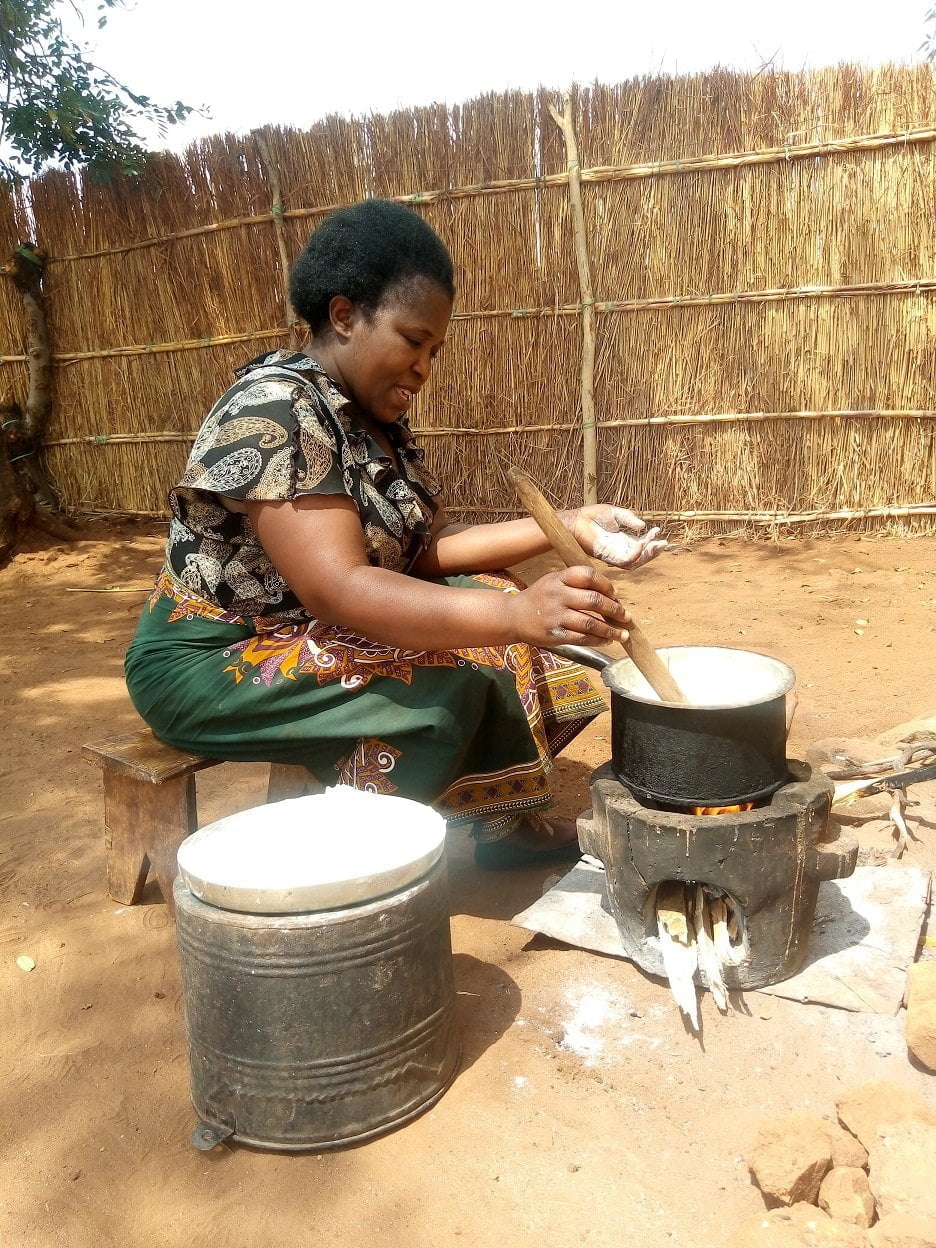Investigating the Chitetezo Mbaula Cookstove

The Chitetezo Mbaula cookstove is distributed by United Purpose in Malawi with the goal of combating deforestation by replacing the traditional charcoal/firewood cooking stoves. In an effort to assist, ARC worked with stakeholders to see how small changes in the stove might translate into fuel and emissions reductions in lab tests. Of course, this information is only useful to researchers in the field as possible iterations. They determine if the changes might translate into practical conservation. The collaboration continues as possibilities are examined.
In its stock form, the stove achieved an average thermal efficiency of 22.5% during three modified laboratory based IWA 4.2.3 tests at high power. As the stove body got hotter, the thermal efficiency increased from 17.6% to 26.6%. The thermal efficiency Tier rating was 1, and PM2.5 emissions, at 1093.3 mg/MJd, gave a Tier rating of 0.
Simple Adjustments Make Some Performance Improvements
Three one inch in diameter holes were drilled through the back of the clay stove body with the intention of allowing more air into the charcoal bed. The pot gap on top of the stove was also reduced to 6mm. These two changes resulted in an average increase of thermal efficiency with char from 22.5% to 29.6%.
The CO emissions factor per energy delivered to the cooking pot decreased from 10.45 g/MJd to 5.63 g/MJd, although at the same time the firepower decreased from 8.9 kW to 5.9 kW. Natural draft stoves with lower firepower tend to make less emissions. Since the time to boil (normalized to 75°C temperature rise) also increased from 22.4 minutes to 25.2 minutes, further study is needed to determine if the reduction in CO emissions also occurs at 22.4 min to boil.
Jet-Flame and Pot Skirt Increase Efficiency, Reduce PM2.5
The Shengzhou Stove Manufacturer Jet-Flame was then inserted into the stove body with a metal Rocket combustion chamber. A 6mm channel gap metal skirt was also used around the 5 liter flat bottomed pot. With these changes, the stove achieved an average thermal efficiency of 47.7% during three laboratory tests at high power. As the stove body got hotter, the thermal efficiency increased from 44.9% to 52.3%. The IWA thermal efficiency Tier rating was 4. Since all of the tests scored within Tier 4, which is the maximum score under the ISO IWA, the 90% confidence interval of the Tier rating was 4 to 4. The PM2.5 emissions of the stove were 69.0 mg/MJd and the Tier rating was 3.
When tested in the field, ARC roughly estimates that emissions will be something like three times higher. This is a “rule of thumb” that is not meant to be an accurate guess but a reminder that many researchers have found that emissions in the field are much higher compared to lab test results! The lab test can point out theoretical “improvements” but only field testing can determine actual performance and practicality. On the other hand, if cooking takes place outdoors, as in the photo above, exposure to harmful smoke can be estimated to be dramatically reduced by the increased air exchange rates.




Leave a Reply
Want to join the discussion?Feel free to contribute!